Blog
Welcome to our blog! Here we will post interesting updates related to our work. We will also write some articles and give you some information which is related to our work and the world of the vintage pens. We are just launching this blog page and it will be work in progress. Please feel free to comment or add to anything published here or also if you want to publish something on our blog page, please let us know what you have in mind and we will be happy to publish it so all of our visitors can read it!
November 25th 2021 - The Montblanc Pens from the 80 Year Lost Attic Find - WWII German Officers Pens

If you were following our work recently, you are probably aware of our amazing Attic find which we have shared in our previous blog post below. The find was also featured in an amazing article at The Pelikan's Perch: "Treasures In The Attic: A Time Capsule Rediscovered". We are so fortunate to be involved with such an amazing find, we are thrilled every day we spend working on each of these pens.
After several months of work with these pens, there seems to be no end to amazement and surprises these pens hold for us. This time we've focused our work on the Montblanc fountain pens in the find. There are several models including several variations on the 234 1/2 model, the 333 1/2, 132 and other fountain pens and pencils.
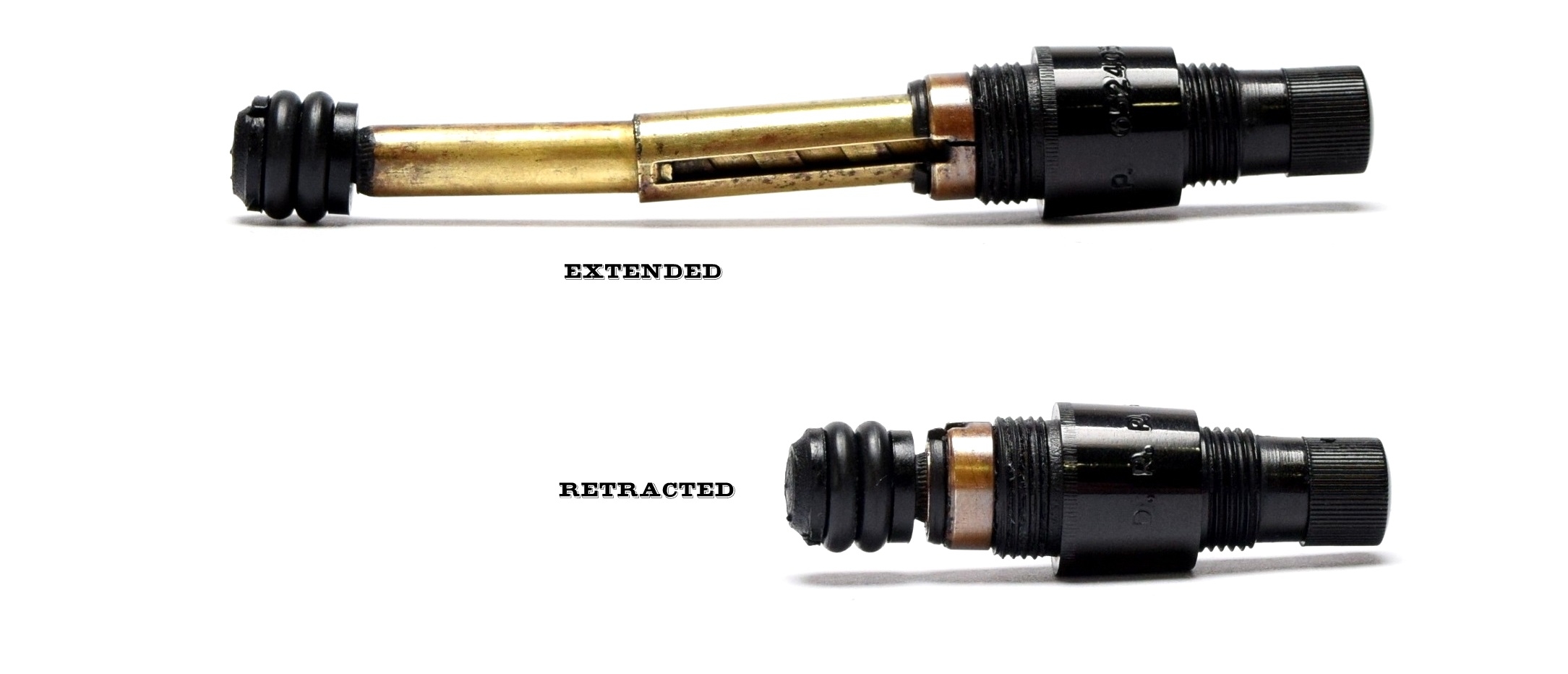
One of the most satisfying work for us is being able to work on the original 1934 Montblanc patented Telescopic Piston filling system, patent number "D.R.P. 652405". This system is years ahead of its time, and to this day it is still an engineering achievement many of us admire and talk about. We address the inner workings of this piston system in our Montblanc 234 1/2 description in detail with detailed photos.

Another surprise for us while working on these Montblanc pens, was the discovery of an Easter Egg inside the pen. For the first time ever, we actually discovered a needle inside the feed in one of the 234 1/2 Montblanc pens. This was a technique and practice done by the old pen craftsman in order to regulate the ink-flow in a particular nib-feed combination. If you want to read more about this amazing tradition, we also address this in the Montblanc 234 1/2 description.
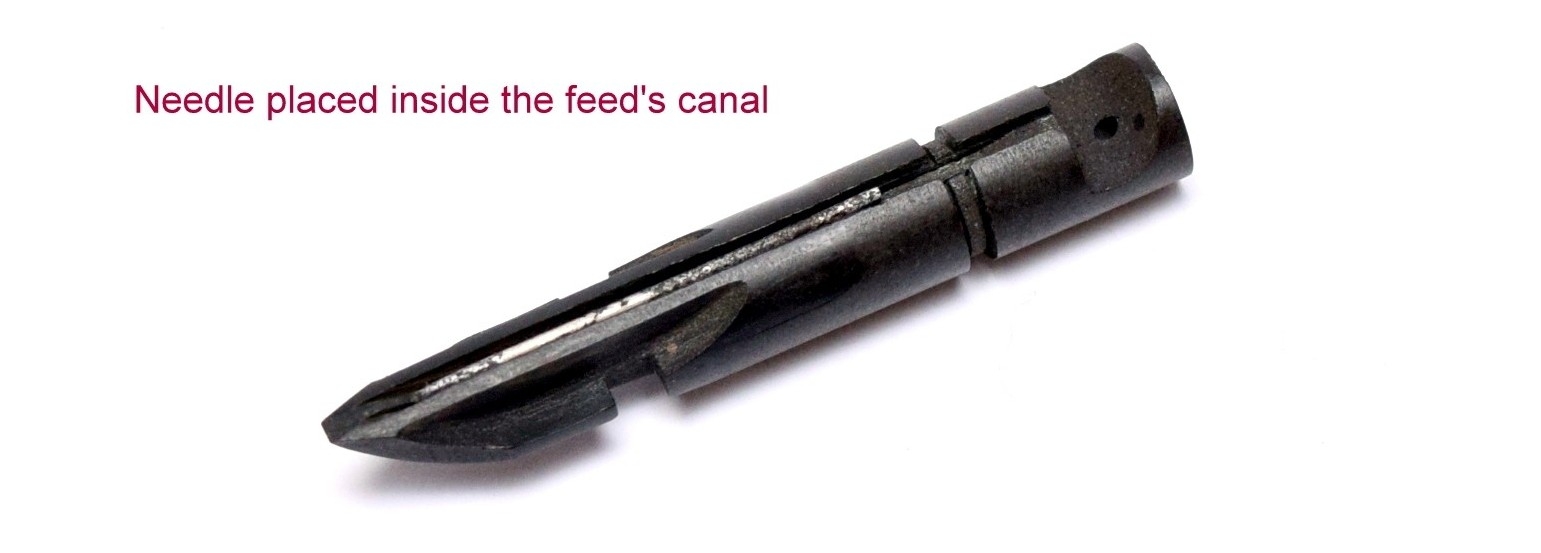
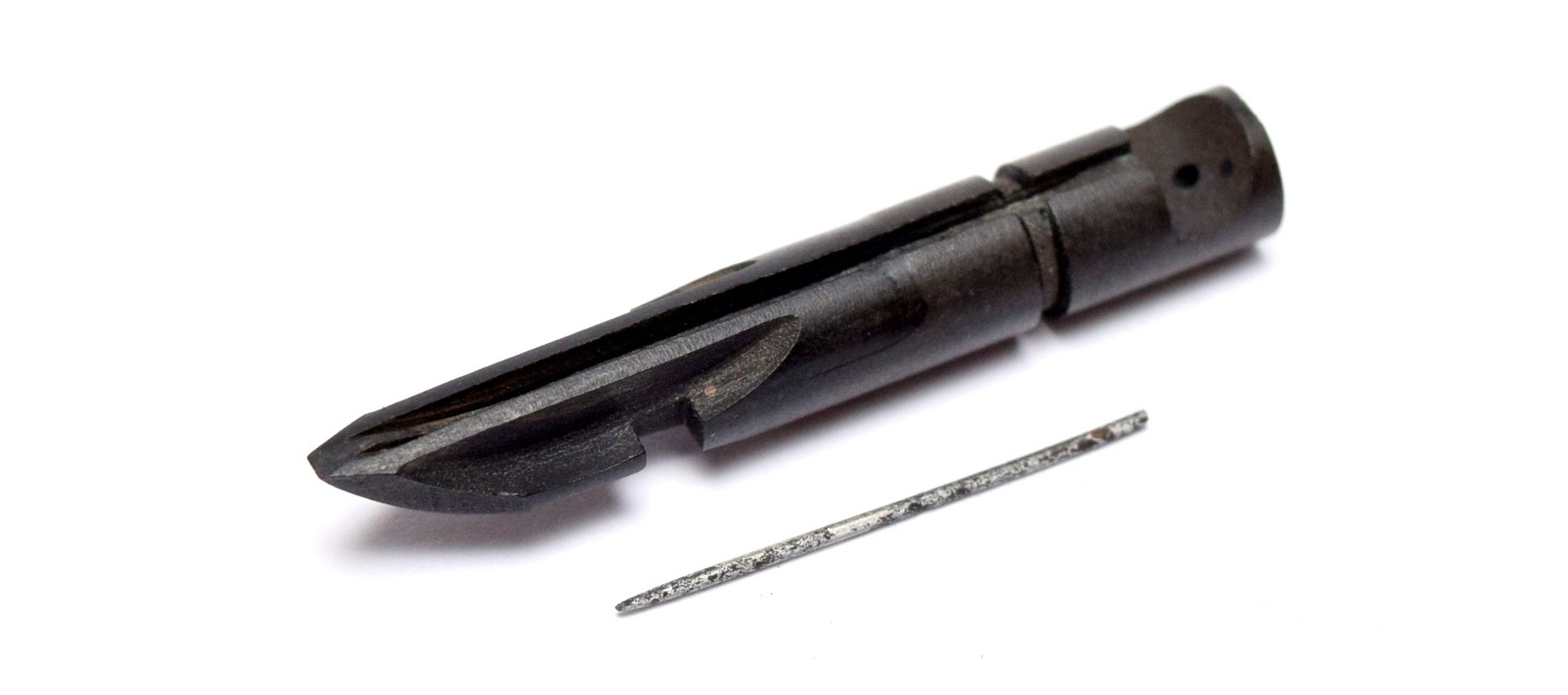
From the 300+ pens in this find, over a dozen pens and pencils were Montblanc. But as we mention in our Montblanc 72 PL listing unlike other brands that were new never used pens, most of the Montblanc pens showed some signs of use and had some traces of ink in them. This led us to conclude that the shop didn't have a contract with Montblanc, rather these were either trade-in pens, or simply the shop keeper got them from other customers (second hand) and sold them in his shop since he probably wanted to offer the Montblanc as a brand as well.
One of the first Montblancs from this find we've listed is the amazing 72 PL pencil made out of glossy pearl finished celluloid. This was the time when these repeater pencils were becoming extremely popular and every company had to have a similar product. At around 1933/34 Pelikan launched its Pelikan AUCH 200 Repeater Pencil, which is nearly identical with the Montblanc pencils from those years, and not surprisingly than both companies had been in "patent wars" for decades, starting with the differential piston filling mechanism, to feeds and collars, tools and probably even pencil designs and mechanism.

Today we call most of these pre-war and wartime Montblanc pens the Officer's pens. Apparently these models were the first choice for many of the German officers due to their reliability and design. Not surprisingly then we find them in this shop exactly in the years we suspect the shop closed, 1941-43. This was the time when Yugoslavia was under the German occupation but many of the shops still operated. Hence it is very likely that even German officers were customers in this shop, buying Pelikans, Matadors, Kawecos and what not, since most of the brands in the Find were German made. Then it is not hard to imagine how German officers would trade their Montblanc pens for other pens the shop had to offer.
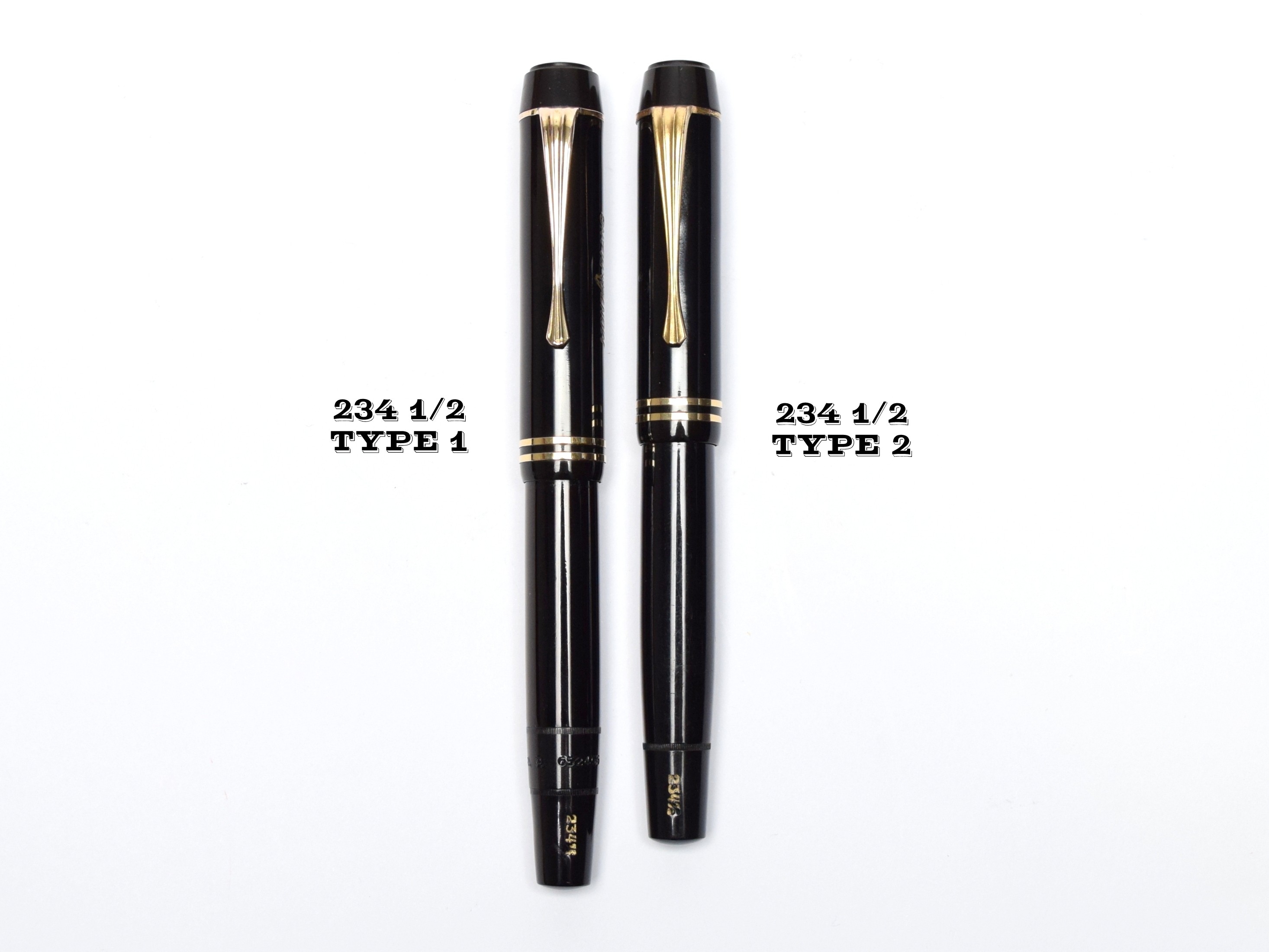
The third Montblanc pen we worked on from this find was the compact but robust 332 Model. This is the only pen that did not have a capped turning knob, rather an exposed one which is very simple and convenient to use.

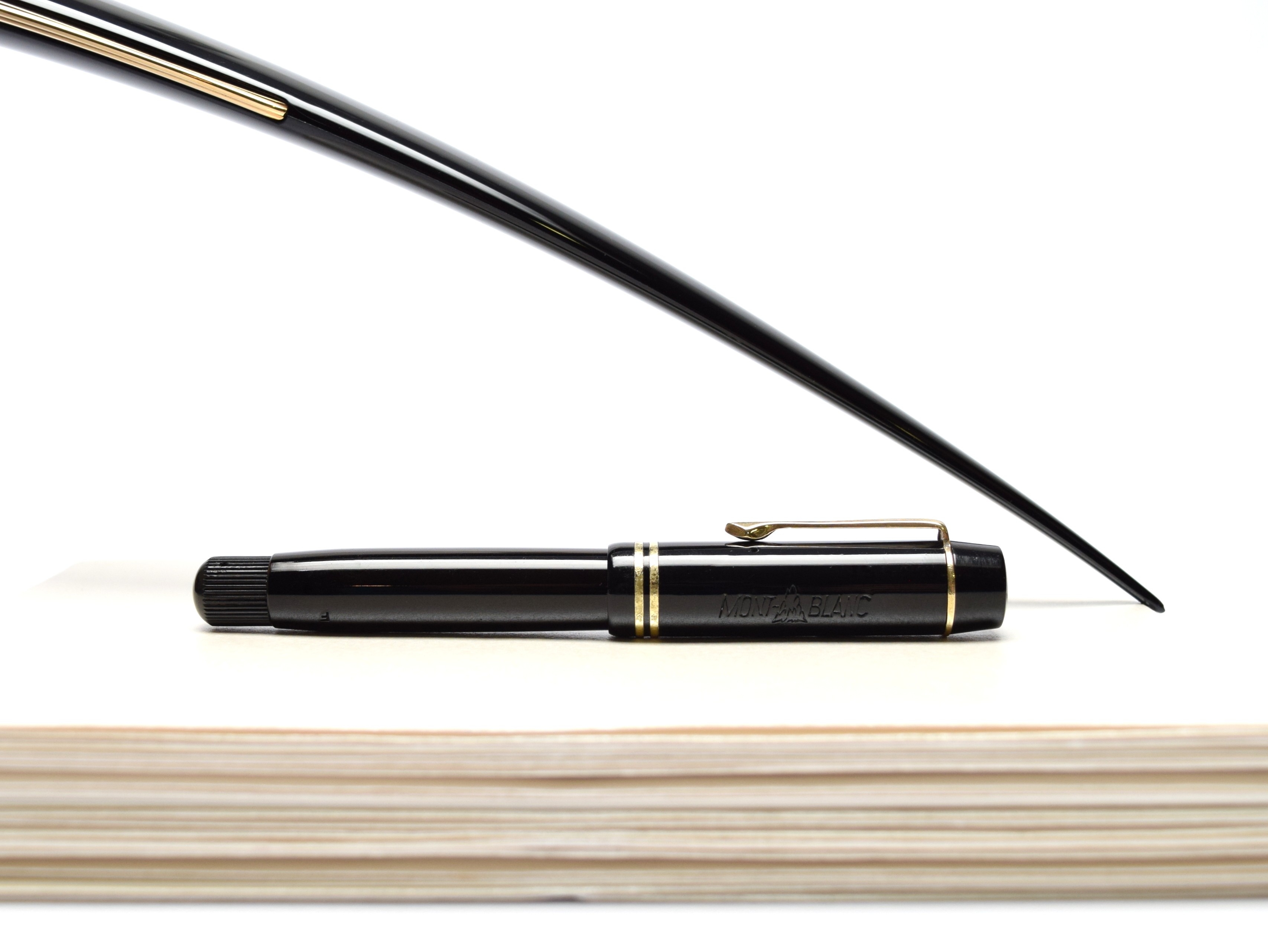

Last year, in the midst of the Corona crisis we also took part in another amazing find, this time with the Kaweco pens hidden in the frame of an old Oak Wardrobe. In this find we go deeper in the inner workings of the economy than and how German officers were regular customers of these shops, and that the shops even though under occupation, had a strong incentive to order German goods as those were in high demand.
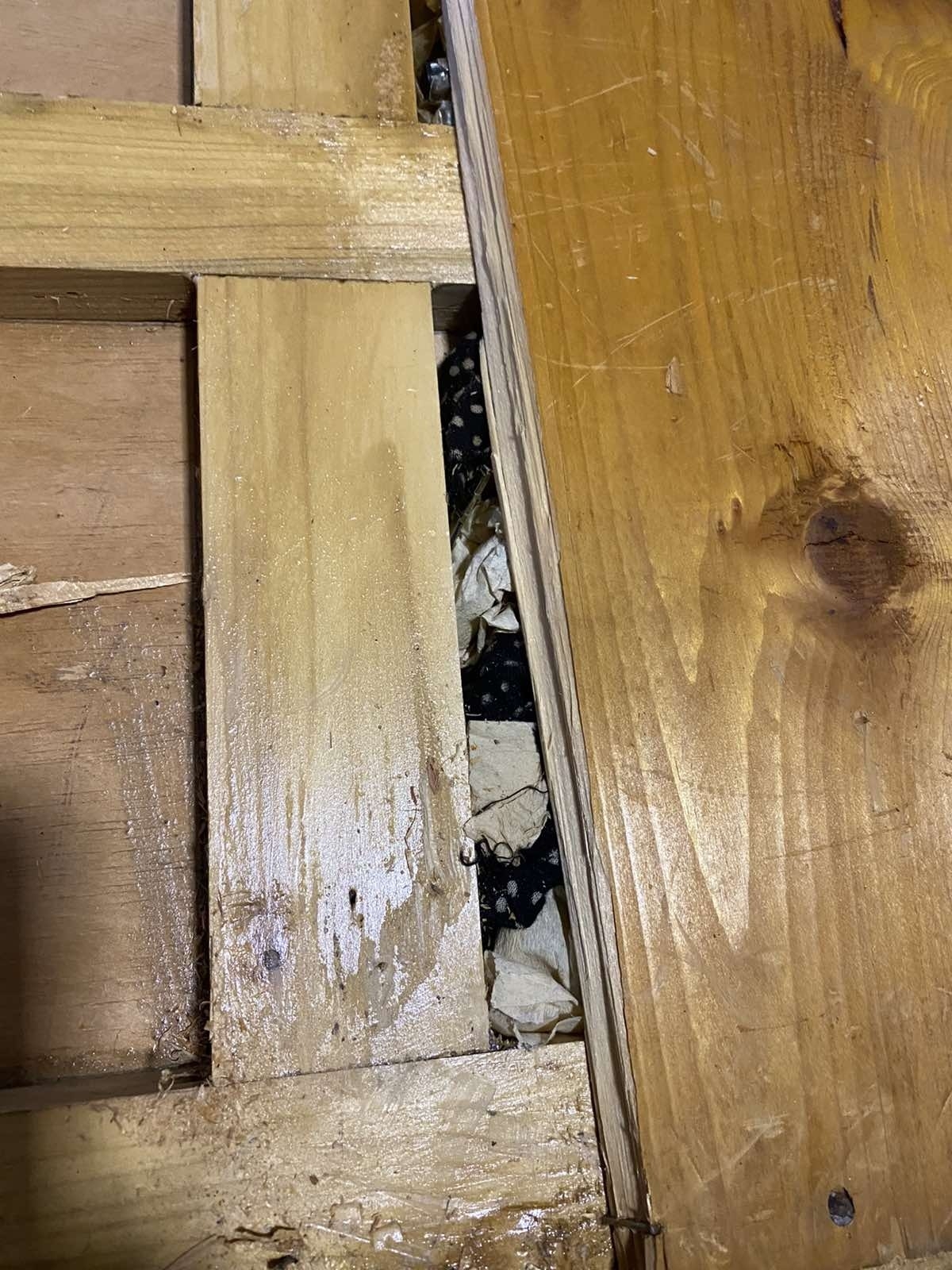
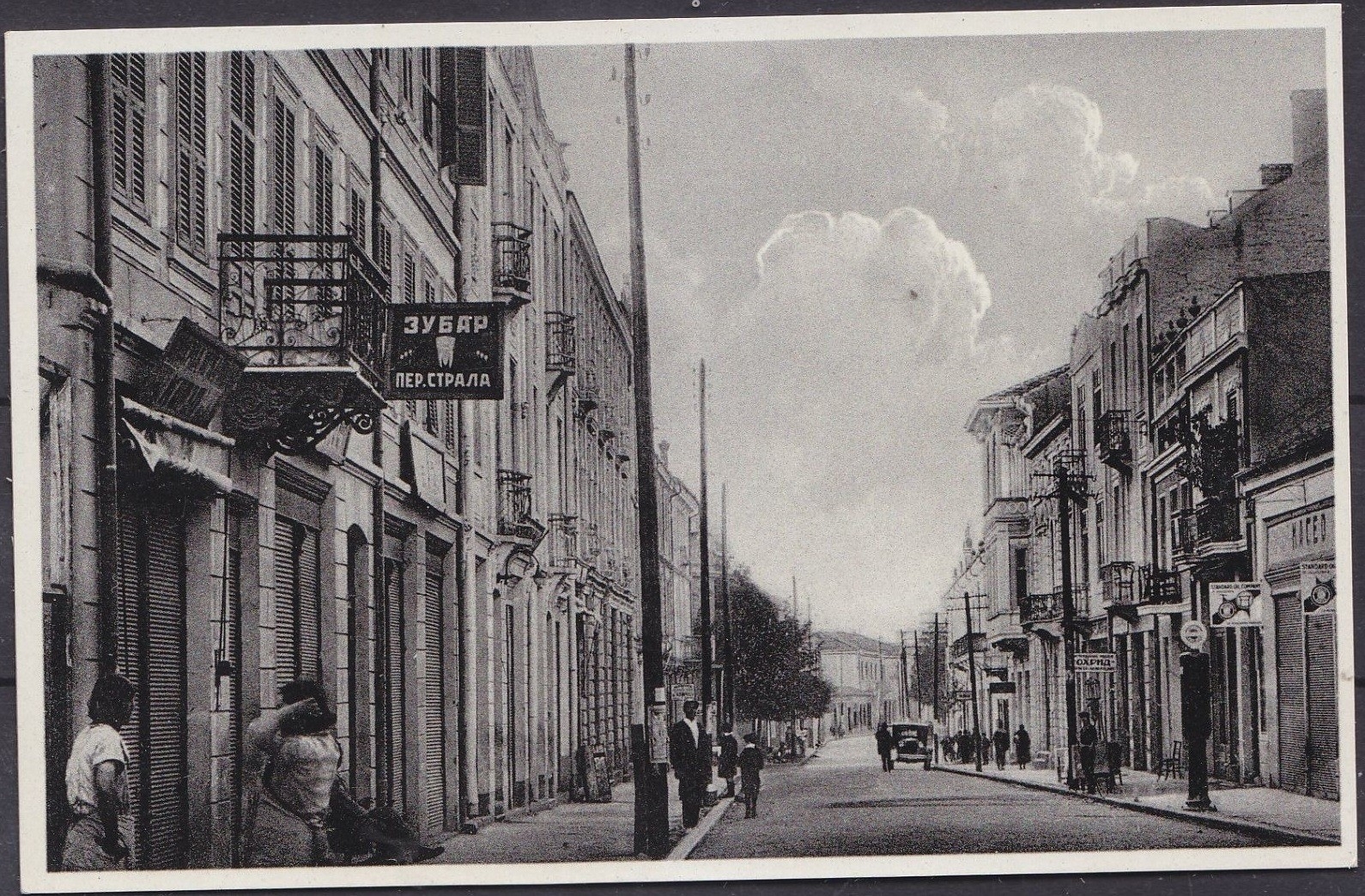
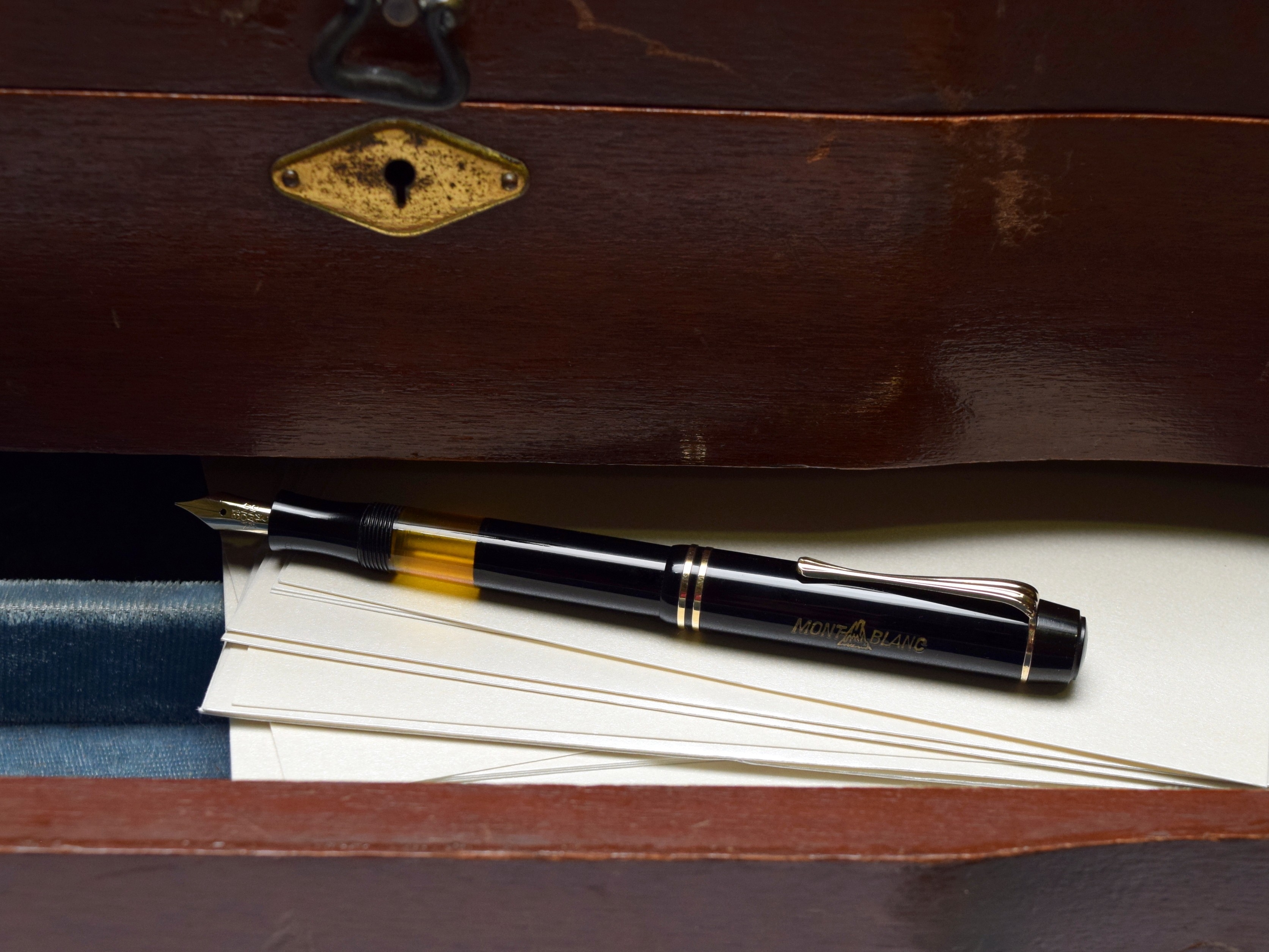
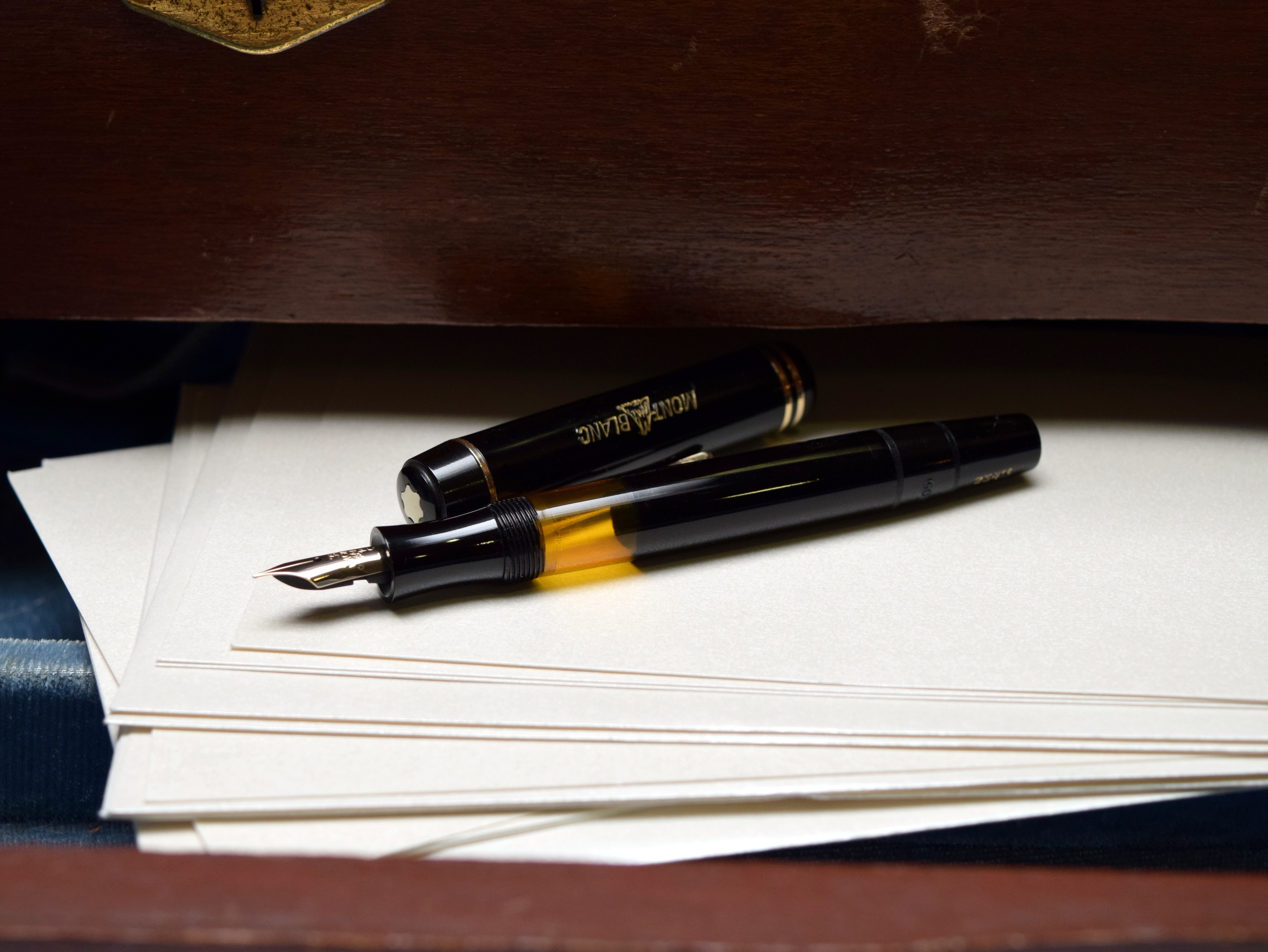
With this Attic Find we probably have once in a lifetime opportunity to sneak-peak into the last few moments of a pen store from 80 years ago and the pens that were sold in that long forgotten store. These pens only open the door for us into this story and circumstances surrounding them, and we hope to find out much more about these pens and the companies that made them, which could be beyond rewarding for all of us and the entire vintage pen community, and we will make sure to share every single detail with you.
In the following days and weeks we will continue to list the Montblanc pens from this find and we will share whatever info (or Easter Egg) we will find in each of those pens. So stay tuned and visit our Montblanc category or our Sold Items Section to see what has been listed or already listed and sold.
June 2nd 2021 - The 80 Year Lost, 300+ Pen Attic Find
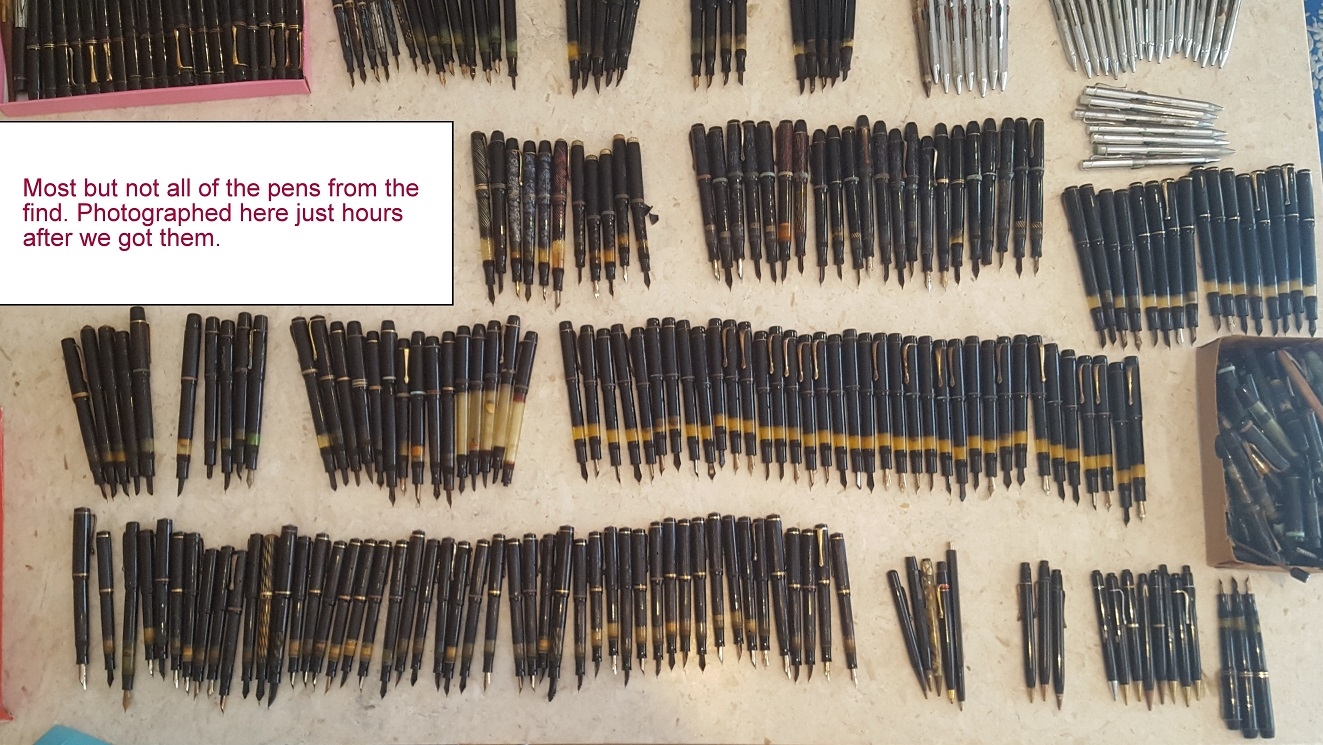
This is a story about a mind-boggling attic find, consisting of over 300 pens. We were extremely fortunate and humbled to be the first people after the owners to see and touch these pens, pens which were safely hidden in an attic for around 80 years. We are so fortunate to be able to examine these pens and work on them, but also to have a time-travel like experience which took us 80 years back to the time when these pens were basically packed overnight and hidden somewhere in the early 1940s, and never saw the light of day before they were recently found by the descendants of an old pen & watch shopkeeper.
Incredibly, very similar to the amazing Kaweco pen find from early 2020, (which we strongly urge you to read at this point), here too, the pens were simply packed overnight and hidden, and stayed hidden for around 8 decades. As we mentioned in our Kaweco pens find, these stories seem to occur here in the Eastern European countries much more often than in the western countries, simply because here there was such a tectonic societal and political changes with the onset of the Communism, which would trigger sudden and massive hiding of valuable goods, including of course when fleeing an invading army which unfortunately happened quite too often in Europe throughout the centuries.
Earlier this year, (March 2021), we were contacted by a couple who apparently "found some old pens" hidden in the attic of their old house, in which the grandfather of the husband used to live. Since many people know us here as "incurable pen addicts", starting from collectors, to antique shop owners, and while we also have ads running that we buy vintage pens, usually we are the first people, people like this couple get in touch with. After several WhatsApp photos were exchanged we immediately knew this was something worth investigating right away, so jumped in the car and drove straight to this other city where the pens were.
As soon as we met and were presented with the pens, tightly packed into very old boxes, each containing its own brand, we realized right away that this is starting to look extremely similar to the Kaweco find pens. What people usually do not realize is how deep we go into investigating where these pens are from, how they happened to come in the possession of these people and so many questions that follow where this unsuspecting couple is getting kind of wary as to who are these strange people they are sitting and talking with asking so many "weird" questions. This is extremely important to us as a company, not only as to discover the provenance of the pens, but also for getting the wider perspective and context of the time and circumstances that happen around such items, the story you are now reading. Of course, after a while when they realize who we are and what we do, and after we start the first cup of coffee, words start to flow as they do with those old family stories we all like to tell and hear.
To make this long story short (if that's even possible, and here trying so unwillingly), the husband in this couple is the nephew of a pen & watch shopkeeper, who operated starting somewhere in the 1930s to the early to mid 1940s. Strikingly similar to the Kaweco pens, here too, from the family stories the nephew had heard and shared with us, the shop was simply closed one day, and apparently part of what was there was hidden on the attic of this house, house which was also close to the shop, both of them being in the city center. This would suggest that the shopkeeper and his family were the "higher class" folks, usually the business or merchants class, which also served their counterpart class of people, having the "fancy" shops and houses at the time in the city center. Unfortunately these were also the people that communism targeted and hit hardest as most of what they had was confiscated after the war when the communist came to power, and they were made an example of, that personal wealth was not possible and welcomed in this new communist order. Many people fled, and for the many that stayed here, it meant losing almost everything and starting all over again in a new system. However some of the shops and houses that were confiscated were later returned to their owners or the owners' descendants with the so-called "de-nationalization" in the early 1990s. Yes, when they were initially confiscated it was conveniently dubbed "nationalization", which was meant to sound kind of honorable for the propaganda, but not some much for the people from which it was "nationalized". Since many of those people fled, some of those houses are still without declared heirs and some are still in the possession of the state.
This is a house which this couple inherited several years ago and were now renovating in order to sell it. As to our most obvious and aching question, "why you or anyone in your family were not told about these hidden items'', the answers here are again strikingly similar to the Kaweco pens, and that being, resurfacing such items in the Socialist country could possibly get you in trouble as you would have to explain why would you have such foreign goods and why did you hid them in the first place. And understandably so, as these were all German made pens, about a dozen brands, including Matador, Reform, Kaweco, Pelikan, Montblanc, Osmia, Luxor, Nacional and others. Therefore overtime these items are being simply forgotten and as people age, maybe even believe these items are becoming worthless let's say in the 1970s or 1980s when they could possibly be more easily resurfaced, the owners simply let them be hidden until they pass away and someone else from the family finds them several decades later.
After fairly brief negotiations, we agreed to acquire almost all pens with the exception of a dozen or so pens they decided to keep for posterity. For all of you pen hunters out there, the place to be is the Eastern European countries, as these pen finds and old pens resurfacing happen more often than we may think. But in today's age they don't come cheap, as people are only few clicks away from knowing what they have, and since most if not all of these pens have a proudly and neatly inscribed make and model (unlike most new pens), the owners will know in minutes what the actual cost of these pens are, and will ask for such similar prices when selling. This is why there is only one chance to acquire such collections or a find, as there won't be a second one, people will find a buyer in a matter of days. More often than not, such buyers show up from Germany, Austria and other western EU countries and immediately buy such items without any negotiations; we've heard of such collections changing hands in matter of hours before we were even able to show up and meet the sellers.
Therefore, to give you a perspective of how this works and hopefully place you there with us, there is no time to inspect the pens individually, you can only examine a few at best, nor there is time to select what you are going to buy and what you are going to leave behind, especially with a collection of 300+ pens. The seller states a price and there is little to no bargaining, you can either leave it or take it, with all of the risks on the buyer's side. And as we collectors know, at least half of the pens will be in a non-restorable condition. However, for people like us, there is much more than just the value of these items. For people who get shivers when seeing 300+ pens packed for 80 years, such finds can show much much more than what each individual pen can. It gives us a window as to what was going on at the time, and if you open your senses you can even smell the old celluloid or ebonite, feel and touch items that were handled decades ago. It will tell you what pens were popular at that time in this shop, what was chic, what was more affordable, what was more expensive, which brand carried what models and much much more. So this is why people like us are hopelessly at a disadvantage in such negotiations, as while the other side just sees price, we get emotional, as there is no price that we won't match in order get that feeling and knowledge with a group of pens which could possibly even help us discover some hidden facts or history about these companies and their pens. The value of the whole is much greater than the sum of its parts.
And as fate would have it, there was the cherry on the top. As we shook hands, the nephew said "oh there is one more box of pens, but you wouldn't like that, it's full of completely broken pens, and when I say broken I really mean in pieces". So this is where people like us get a serious hit by that "very dried & powdered ink-o-caine", as for us at this moment, this box was probably more valuable than anything we just got. Why? Moments later we are presented with the "box of broken pens" and indeed despite anything there being almost worthless, the box actually reveals everything and connects the dots. It is the same as if someone would have visited our workshop today from 100 years in the future and be able to sift through our drawers of parts and broken pens, our tools and so on. It reveals what pens were coming back in for repair, what pens had what part changed on them, what pens had possibly factory flaws when they were launched, what part failed often on which pens, what were the most common failures, what pens had their nibs broken or bent, which pens were most repaired, which pens were popular and sold best, and so so many more secrets one can uncover if they look carefully enough in a box of parts of an 80 years ago pen shopkeeper!
So needless to say, we got that box too, which actually contained another smaller box full with small paper bags, each labeled individually with what nibs and nib size it contained, carefully hand written labeled by the old shopkeeper.
As we wrap this story up, we hope that we have at least in some way conveyed the circumstances of this find and our feelings about it, and as despite many vintage pen sellers not always being appreciated by collectors, more often than not rightfully so, here at ProtoPens we truly care about the pens we sell, as this is just another way of collecting.
In the last couple of months we have carefully catalogued each pen and all of the nuances about this find, hence they may help serve in the future to maybe uncover some facts about these pens and their brands. We will only offer the pens that are without any major defects, ready to be used as with all the pens we sell, hence we will offer for sale only some of the pens from this find. One thing we certainly won't be doing is interchanging parts or substituting parts from another pen in order to repair a different pen. The pen will be either in full working order as we got it, only repaired if necessary, cleaned and polished inside-out, and possibly with a changed cork which we will clearly state, or if it does not meet those criteria it won't be offered. It is very important to us to keep each pen as original as it was found and for it to come to you in that condition, proudly and with this story attached to it.
What's amazing about these pens is that almost all of them were in NOS never used condition as they were basically sold new there at that time. There were several pens that had ink in them, possibly pens that were returned for repair or maybe test pens, or maybe even a pen or two that was used by the shopkeeper. Some of them with labels and stickers on them, which are worthwhile seeing for the first time ever. And possibly even more amazingly so, a major part of these pens, regardless of the brand, came with steel nibs, which places them and the circumstances around this story exactly when this couple said the shop was closed, the early 1940s, when gold nibs were neither produced nor later even exported from Germany to other markets. Therefore the shopkeeper may have either willingly or unwillingly replaced the original gold nibs, hid them, or melted them, or they got confiscated by the occupation force, or if simply his business was actually thriving, these pens may just have been the latest batch from his last orders from the German pen makers, pens which came with steel nibs. And even though steel, these nibs are still each nicely marked by their respective brands, Pelikan, Kaweco, Montblanc, Osmia or any other brand from that era. Another thing we are certain of, is that the pens had not been touched or serviced, or with parts intermingled, or anything done on them before us. This is difficult to convey, but the state in which we found them and the way they were packed and all of that dangerous cellulose-nitrate smell, suggest that neither the previous owners nor anyone else had ever handled these pens before us, except of course the shopkeeper some 80 years ago.
We will offer these pens very gradually in groups by their manufacturer, as it's best for us to focus on one particular brand at the time, which usually requires similar techniques and tools in order to bring those pens back to life. As we are a small team of people, this will take us months and possibly even a year or more. So please make sure to visit our website from time to time and if you see a pen listed from the 1930s or 1940s it's likely going to be from this find with this text included.
The first group we decided to work on is possibly the most intriguing one, The War Pelikans...

